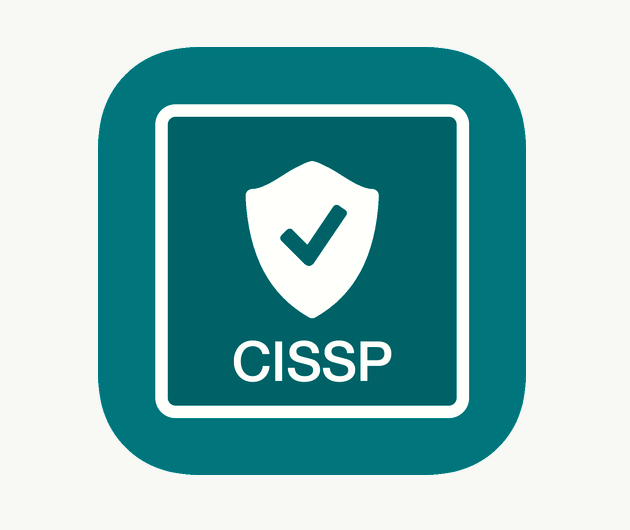CISSP - Question Bank 15
Test your knowledge of CISSP with these multiple choice questions. Each Question Bank includes 20 practice questions that have been designed to measure your knowledge of key ideas.
A key factor to keep in mind is that guessing is better than not answering a question.
Every single question on the CISSP exam is a four-option multiple choice question with a single correct answer. Some are straightforward, such as asking you to select a definition. Some are a bit more involved, such as asking you to select the appropriate concept or best practice. And some questions present you with a scenario or situation and ask you to select the best response.
StartQ1. What is the first step that individuals responsible for the development of a business continuity plan should perform?
A. BCP team selection
B. Business organization analysis
C. Resource requirements analysis
D. Legal and regulatory assessment
Q2. Once the BCP team is selected, what should be the first item placed on the team's agenda?
A. Business Impact Assessment
B. Business organization analysis
C. Resource requirements analysis
D. Legal and regulatory assessment
Q3. What is the term used to describe the responsibility of a firm's officers and directors to ensure that adequate measures are in place to minimize the effect of a disaster on the organization's continued viability?
A. Corporate responsibility
B. Disaster requirement
C. Due diligence
D. Going concern responsibility
Q4. What will be the major resource consumed by the BCP process during the BCP phase?
A. Hardware
B. Software
C. Processing time
D. Personnel
Q5. What unit of measurement should be used to assign quantitative values to assets in the priority identification phase of the Business Impact Assessment?
A. Monetary
B. Utility
C. Importance
D. Time
Q6. Which one of the following BIA terms identifies the amount of money a business expects to lose to a given risk each year?
A. ARO
B. SLE
C. ALE
D. EF
Q7. What BIA metric can be used to express the longest time a business function can be unavailable without causing irreparable harm to the organization?
A. SLE
B. EF
C. MTD
D. ARO
Q8. You are concerned about the risk that an avalanche poses to your $3 million shipping facility. Based upon expert opinion, you determine that there is a 5 percent chance that an avalanche will occur each year. Experts advise you that an avalanche would completely destroy your building and require you to rebuild on the same land. Ninety percent of the $3 million value of the facility is attributed to the building and 10 percent is attributed to the land itself. What is the single loss expectancy of your shipping facility to avalanches?
A. $3,000,000
B. $2,700,000
C. $270,000
D. $135,000
Q9. Referring to the scenario in question 8, what is the annualized loss expectancy?
A. $3,000,000
B. $2,700,000
C. $270,000
D. $135,000
Q10. Your manager is concerned that the Business Impact Assessment recently completed by the BCP team doesn't adequately take into account the loss of goodwill among customers that might result from a particular type of disaster. Where should items like this be addressed?
A. Continuity strategy
B. Quantitative analysis
C. Likelihood assessment
D. Qualitative analysis
Q11. Which task of BCP bridges the gap between the Business Impact Assessment and the Continuity Planning phases?
A. Resource prioritization
B. Likelihood assessment
C. Strategy development
D. Provisions and processes
Q12. Which resource should you protect first when designing continuity plan provisions and processes?
A. Physical plant
B. Infrastructure
C. Financial
D. People
Q13. Which one of the following concerns is not suitable for quantitative measurement during the Business Impact Assessment?
A. Loss of a plant
B. Damage to a vehicle
C. Negative publicity
D. Power outage
Q14. Lighter Than Air Industries expects that it would lose $10 million if a tornado struck its aircraft operations facility. It expects that a tornado might strike the facility once every 100 years. What is the single loss expectancy for this scenario?
A. 0.01
B. $10,000,000
C. $100,000
D. 0.10
Q15. Referring to the scenario in question 13, what is the annualized loss expectancy?
A. 0.01
B. $10,000,000
C. $100,000
D. 0.10
Q16. In which Business Continuity Planning task would you actually design procedures and mechanisms to mitigate risks deemed unacceptable by the BCP team?
A. Strategy development
B. Business Impact Assessment
C. Provisions and processes
D. Resource prioritization
Q17. What type of mitigation provision is utilized when redundant communications links are installed?
A. Hardening systems
B. Defining systems
C. Reducing systems
D. Alternative systems
Q18. What type of plan outlines the procedures to follow when a disaster interrupts the normal operations of a business?
A. Business continuity plan
B. Business Impact Assessment
C. Disaster recovery plan
D. Vulnerability assessment
Q19. What is the formula used to compute the single loss expectancy for a risk scenario?
A. SLE=AV*EF
B. SLE= RO*EF
C. SLE=AV*ARO
D. SLE=EF*ARO
Q20. When computing an annualized loss expectancy, what is the scope of the output number?
A. All occurrences of a risk across an organization during the life of the organization
B. All occurrences of a risk across an organization during the next year
C. All occurrences of a risk affecting a single organizational asset during the life of the asset
D. All occurrences of a risk affecting a single organizational asset during the next year
- Question Bank 00
- Question Bank 01
- Question Bank 02
- Question Bank 03
- Question Bank 04
- Question Bank 05
- Question Bank 06
- Question Bank 07
- Question Bank 08
- Question Bank 09
- Question Bank 10
- Question Bank 11
- Question Bank 12
- Question Bank 13
- Question Bank 14
- Question Bank 15
- Question Bank 16
- Question Bank 17
- Question Bank 18
- Question Bank 19


